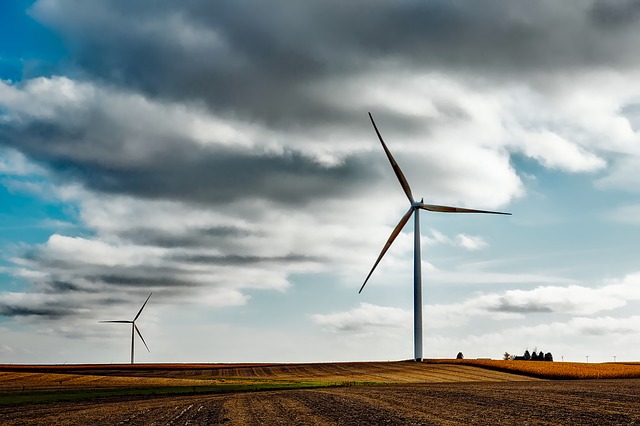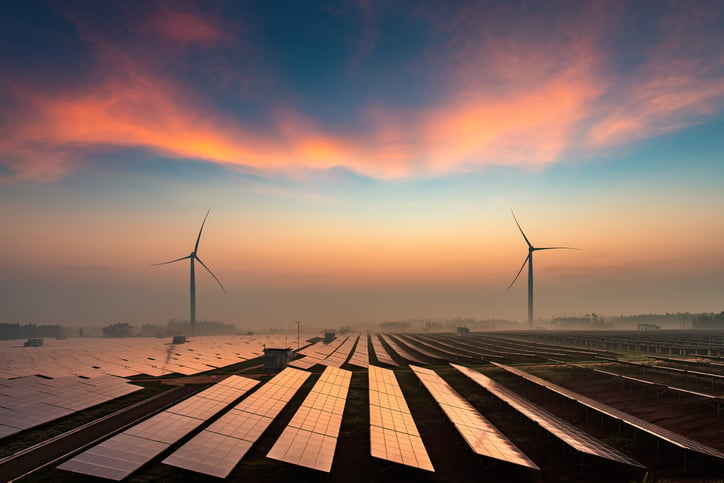How Does a Wind Farm Work?

Starting a wind farm is a massive project, one that requires careful research, planning, and negotiation.
Utility developers and operators who successfully establish a wind farm can enjoy ongoing energy production from an unlimited resource -- energy they can sell year after year while helping the environment. It’s the kind of business that benefits everyone involved, including the planet.
To understand how things work in the wind industry, you need to understand the basics first:
-
How does a wind farm work?
-
What is a power purchase agreement?
-
How does a wind turbine work?
How Does a Wind Farm Work, & How Can the Process Be Optimized?
Wind energy production is not one-size-fits-all
Distributed wind is power generated close to the end use -- by a school or community center that uses the power, for example. A wind farm, meanwhile, is generally meant for electric utilities that need larger amounts of energy.
Whether one’s investing in a large, offshore project or a small, local farm, there’s a lot that goes into successful wind energy production. From the land to the turbine technology, here’s how it’s done:
1. Funding
Naturally, having the ability to invest in a wind turbine’s success is at the top of the list. Unless you have the capital to purchase wind turbines and build out the infrastructure of the power system, you’ll need investors.
Specialized loans and grants may be available that can help you get started, especially if you plan to build in an area of the United States or elsewhere with a renewable power mandate. The Database of State Incentives for Renewables and Efficiency shows available loans and grants in the United States.
2. A Location Where Production Will Be a Breeze
Not every location is ideal for establishing a wind farm. The area must have sufficient wind to produce enough power to be worth the investment.
Research shows that wind farms require at least an annual average (mean) wind speed of 11 mph (5 m/s). But other studies have shown that just a slightly higher wind speed will produce significantly more energy. Windustry, an advocate for wind energy, advises that an area with 15 mph (6.7 m/s) mean wind speed contains nearly 60% more energy than a place with 13 mph (5.8 m/s) mean wind speed.
Turbines are designed according to wind class. IEC classifies turbines as I, II, or III based on complex factors such as:
-
Annual mean wind speed at hub height
-
50-year extreme wind speed over 10 minutes
-
50-year extreme gust over 3 seconds
3. Roadblocks to Building
Area wind speed is definitely the most important factor utilities consider when choosing where to build a wind farm. However, there are other factors that’ll make you dizzy if you don’t stay on top of them.
These issues include:
-
Proximity to a hub. All the energy a farm generates needs to go to a power hub to be worth money. The closer the power hub, the more practical power transfer is.
-
NIMBY. “Not in my backyard” refers to citizens that work to stop developments in their local area. If the neighbors are passionately against a farm, things can get ugly at town hall meetings.
-
Proximity to others. Wind farms are visible from many miles away, and they do make noise. Some people have no issue with miles of ugly telephone wire strung everywhere but hate the idea of three majestic wind turbines on their community’s hillside. Investors consider off-shore wind farms a viable alternative for this reason.
-
Environmental impacts. Utilities should be checking with the EPA and local agencies to be sure a farm will not break laws or regulations. The NIMBY crowd may also have concerns about the turbines’ effect on bat and bird safety.
4. Power Purchase Agreements
The backbone of a wind farm operation is the power purchase agreement, or PPA. This means there is an entity willing to regularly buy the energy the turbine produce.
Getting a satisfactory PPA can be challenging and time-consuming. It is arguably one of the most difficult parts of starting a wind farm. There is a lot of red tape in working with universities and other large institutions to see if mutually beneficial partnerships are possible. In the end, it’s usually worth it for the owner-operator.
5. How Wind Turbines Work
Even though monitoring technology makes day-to-day micromanaging unnecessary, those who get into the wind energy business need to learn the basics of wind turbine technology. Doing so helps inform component purchase and repair decisions.
At its most basic, a wind turbine rotates due to the force of the wind on the blades. As the blades turn, they rotate a shaft that powers a generator -- which produces the electricity you sell.
Of course, those establishing a wind farm need to learn a lot more than this, including what turbine types are best for an area and what adjustments are necessary to make a turbine work best in specific circumstances.
For example, for a wind turbine to take full advantage of differing wind speeds, the wind turbine blade pitch needs to be adjusted according to the current wind speed in real time. Failure to adjust the pitch will lead to lost energy, or worse, damage to the turbine. This is where advanced wind turbine technology, specifically the pitch actuator system, can make a huge difference.
6. Automation for Max Efficiency
Without automation, maintaining a wind turbine, much less a whole farm of wind turbines, requires constant care and attention. That means expensive labor costs that affects an owner-operator’s ROI.
Fortunately, there are tools you can use to minimize the need for manpower. For instance, on a pitch control wind turbine system, you can establish an automated system to adjust the pitch of the blades based on conditions in real time. Using turbines that adjust regularly as conditions change gives the owner the most energy possible and less wear and tear.
That’s why non-pitch-regulated turbines are virtually extinct in utility-scale wind parks.
Learn More About Wind Turbine Pitch Control Systems
We provide resources regularly for those in the business of optimizing their wind turbine’s performance. Pitch control systems are one way to do that. Explore our blog for more education on the industry!



